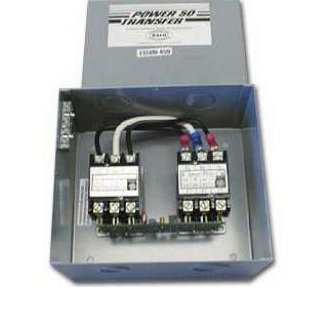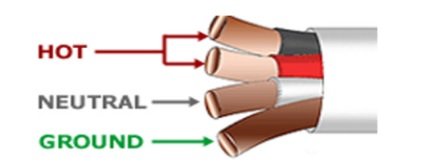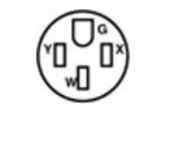Gary I can tell you have been at this helping people for awhile. For many we have a tendency to skim over details that should be conveyed. Let me take a stab at the details but please read through and see if I missed something in the following.
If I was trying to to track this down I would do the following:
By referencing the attached images: You need to understand and remember Feed or hot wires and neutral along with the colors associated with each. In the examples supplied, the feeds or hot wires would be Y and X. The Neutral is the W. Take a look at the attached wire image for an example of the color schemes but you may have a green wire instead of the bare copper. Remember the colors.
Steps:
1) Test Shore Power at the shore power receptacle. Check voltage by placing VOM probes into each feed line. It should read 240 volts. Using the example that would be Y and X.
2) I would then check to make sure the Neutral is also working or connected properly. To do that, place one probe in one feed lets first test Y, then place other probe on the Neutral or W listed on the image. You should get 110v to 120v. If that is true, keep the one probe in the neutral but move the other probe currently in Y and place it in the second feed X. If everything checks out and continues to get around 110v, proceed to the next step.
3) I would then test the feeds going into the transfer switch. Now here is where knowing the wire colors will be helpful. Test that you are still getting 240v by placing the probes on the two feed wires (X and Y). I would again test each feed (Y, X) individually with the neutral (W) to make sure you are still getting the proper 110v reading. That would be (Y and W) getting 110v. Then (X and W) again getting 110v. If everything continues to work as expected, proceed to step #4.
4) Perform the step outline in #3 on the opposite side of the transfer switch. If everything continues to read properly, I would then open and test the RV breaker box.
Based on the fact that everything works properly when running the generator, I would be willing to bet you will have isolated your problem at this point. Before going through all of this, I would reiterate my previous post and make sure all of the lugs or screws are tight and you do not have any loose wires. Before sticking a screwdriver in there, make sure you unplug or turn off the shore power. If anything felt the least bit loose, I would turn the shore power back on and go into your RV to verify you still are experiencing a problem. It may have been as simple as a loose wire.



